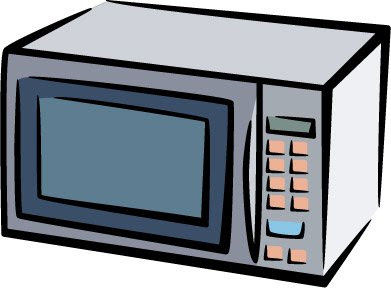Microwaves have been around for a long time and it still baffles me that most people only use them for re-heating leftovers, popping pop corn or for defrosting. The microwave can do so much more! You can cook meats, bake cakes, make candy, hard boil eggs the list is endless. However before you can begin using it you should first know the risks, the benefits, how they work and become familiar with your own.
Risks
There are a lot of conflicting reports out there regarding the safety of using a microwave oven. With the vast amount of information at our disposal you can find any report from a number of different sources that will back up your position. I choose, as with a lot of things, to follow the FDA’s (Food and Drug Administration) warnings and guidelines for microwave use. The FDA reports that the radiation created from microwaves is non-ionizing, which means that they do NOT have the same risks as X-rays or other ionizing radiation. To insure that microwave ovens are safe, the FDA requires manufactures to meet strict radiation safety standards which are created and enforced by the FDA. This post is not being written to invoke a debate as to the safety of microwave use. I personally believe that microwave ovens are safe, I have been using them since I was very young and I have yet to grow a second head, I don’t glow or suffer from any radiation related diseases.
Benefits
There are many benefits to cooking in the microwave. First, you can save quite a bit of money. Do you know how much it costs to run your microwave for 100 hours as opposed to running your electric oven for 100 hours? The oven will cost you around $53.14, while a microwave will only cost around $11.81 (costs vary by electric company). Cooking in the microwave is also healthier because it doesn’t cook out all of the vitamins. The cooking time is reduced so the food retains more vitamins. Using the microwave also reduces cooking time and there is less of a mess to clean-up.
How they Work
It’s truly interesting how a microwave oven works. It’s a 6-sided rectangle box constructed with metal. It has a magnatron tube that runs across the top. This tube sends non-ionizing, microwaves across the top of the oven where they are stirred around by the fan. The fan pushes the microwaves down into the oven, where they begin bouncing off the the metal walls. The microwaves are then attracted to the water and fat molecules that are found in the food. The microwaves begin to penetrate the food causing the molecules to vibrate against one another at the rate of 2-1/2 billion (yes I said billion) times per second. This friction is what causes the heat that cooks the food. The food is then cooked from the outside in and the center of the food is cooked by heat conversion. Pretty interesting isn’t it?
Checking for Leaks
- Place a cell phone inside your microwave, be sure the ringer is on.
- Shut the door
- DO NOT turn on the microwave
- Call the cell phone from another line.
- If it doesn’t ring or show a missed call your microwave is safe from leaks
- It it does ring it needs to be repaired or replaced.
*FDA officials say that microwaves can emit no more that 5 milliwatts of radiation per centimeter over the course of their lifetime. That is well below the limits of acceptable exposure. In fact, scientists say you are bombarded with more microwave energy when you venture outside.
Knowing your Microwave
- What is the wattage? This can be found on the interior door seal. If the tag is missing, heat an 8-oz cup of room temperature water on high power for 3 minutes. If it’s boiling, your oven is over 600 watts and food will cook in the standard time. If it takes longer to boil, your oven is less than 600 watts and food will take a few extra minutes to cook.
- Do you have Hot Spots? Hot spots are areas in your microwave that tend to attract more heat. To check for hot spots, lay a damp paper towel on the floor of the microwave and set your microwave on high for 2 minutes. If the paper towel is evenly damp or dry, you don’t have any hot spots. If there are wet or dry places on the paper towel then you do have hot spots and will need to turn food during the cooking cycle or use a turntable.
Check out the Dump & Bake Microwave Cake that I made yesterday.


Leave a Reply